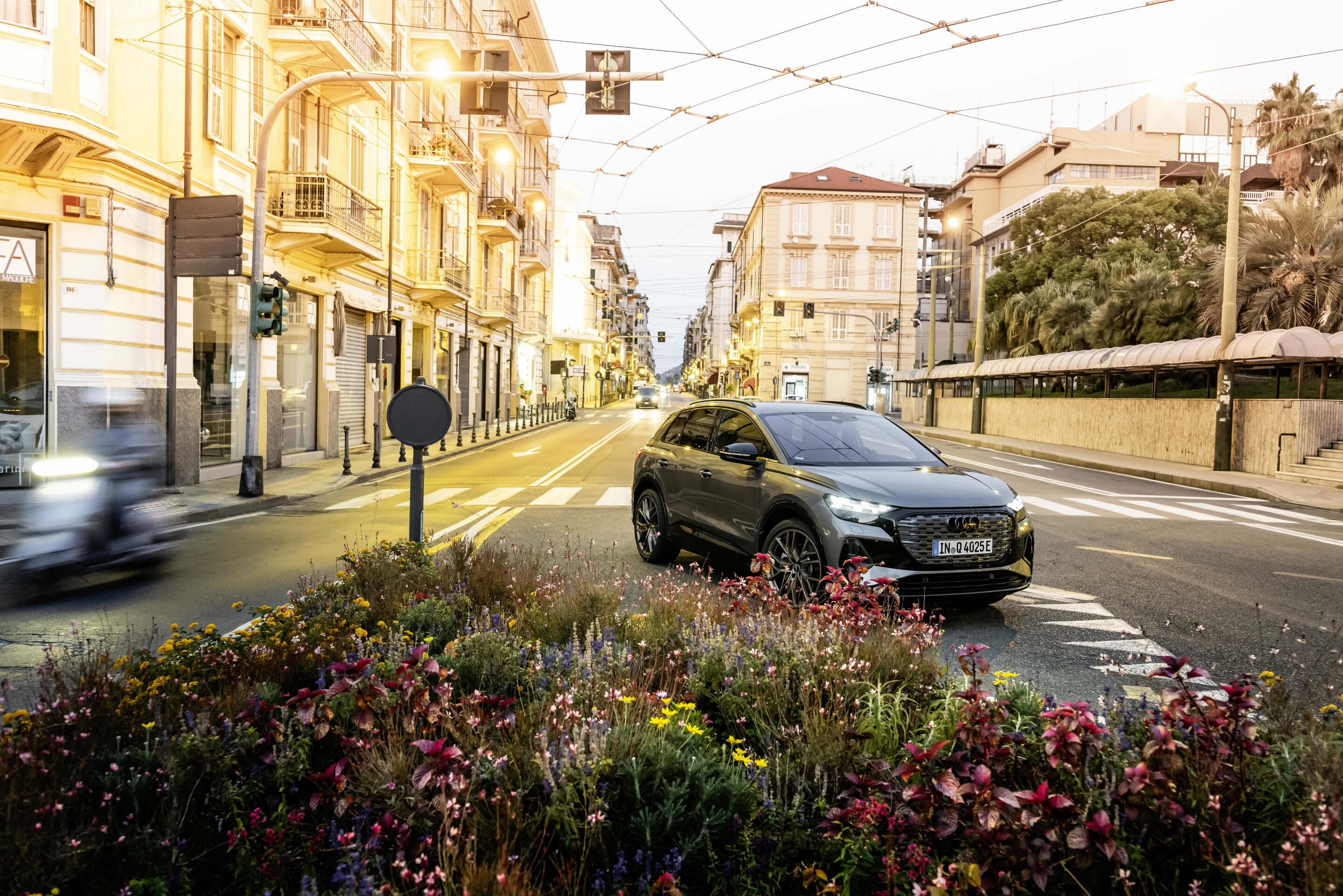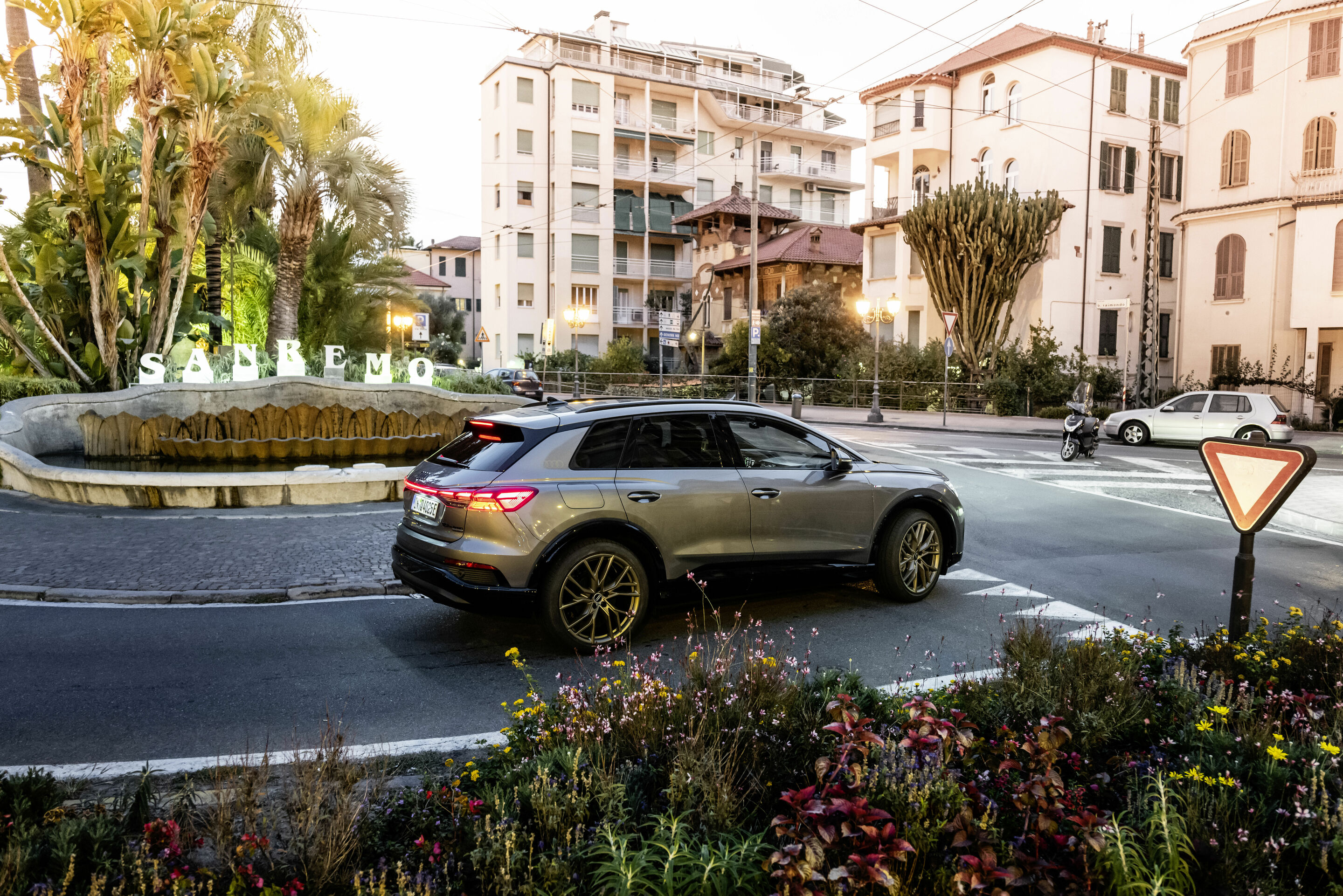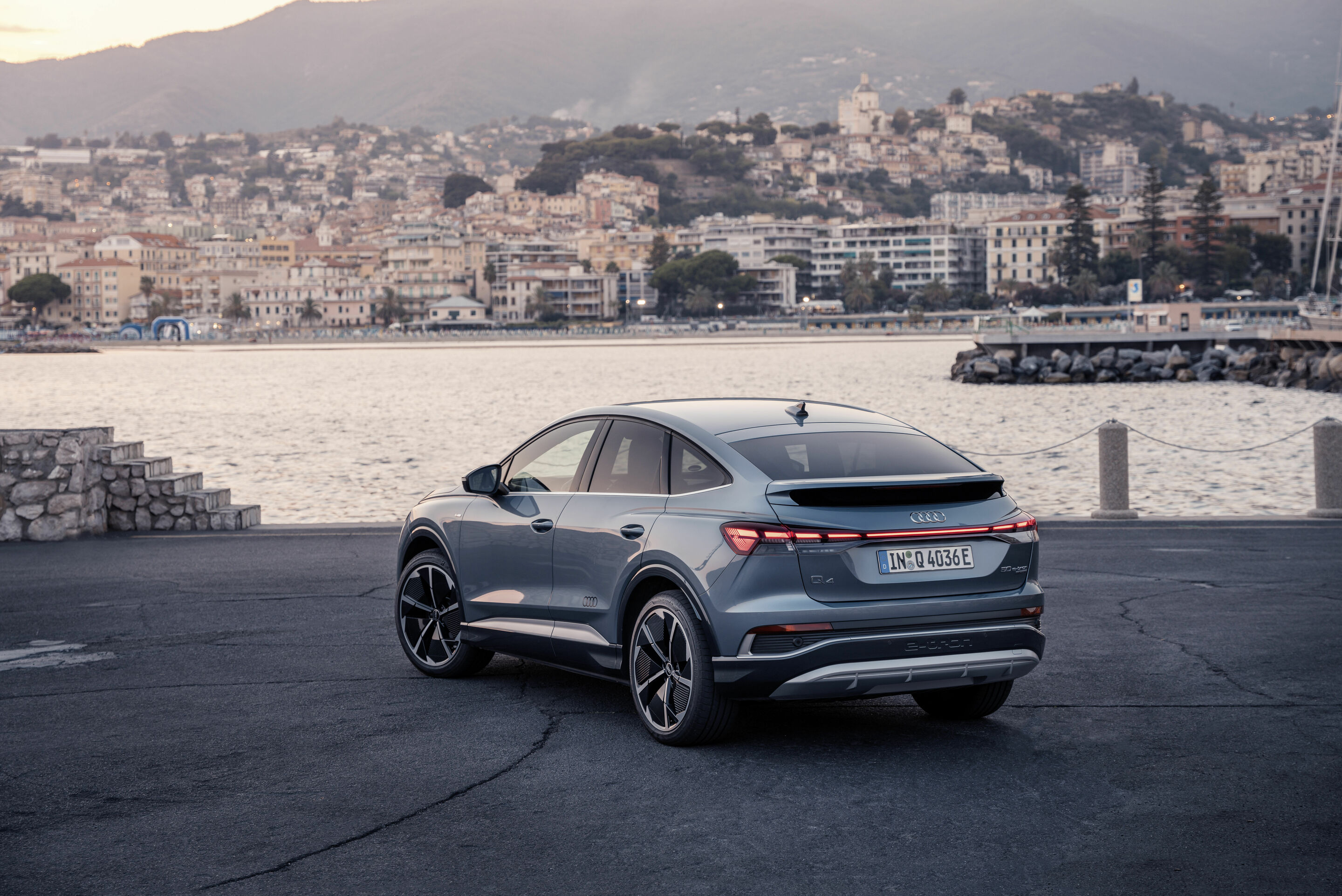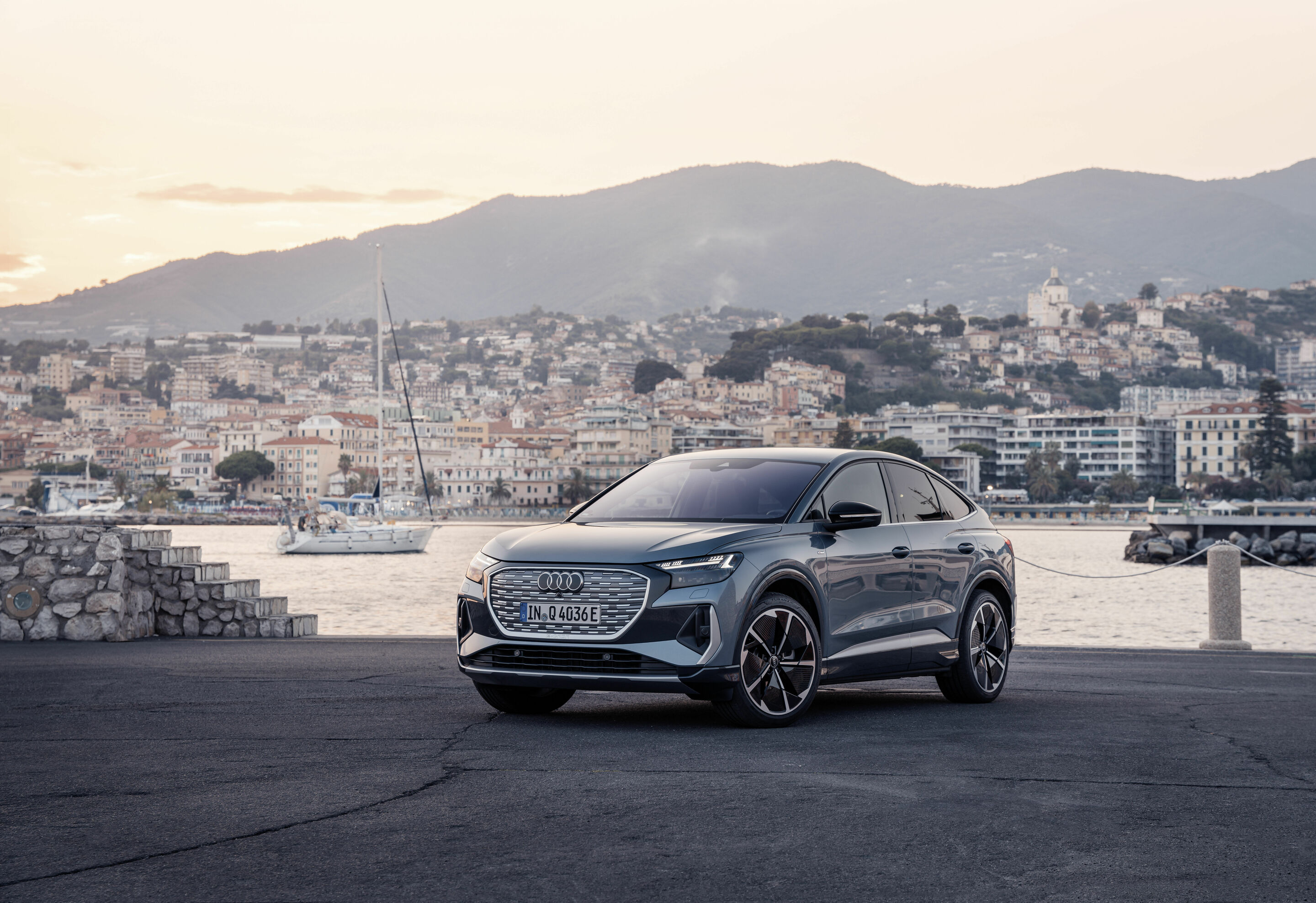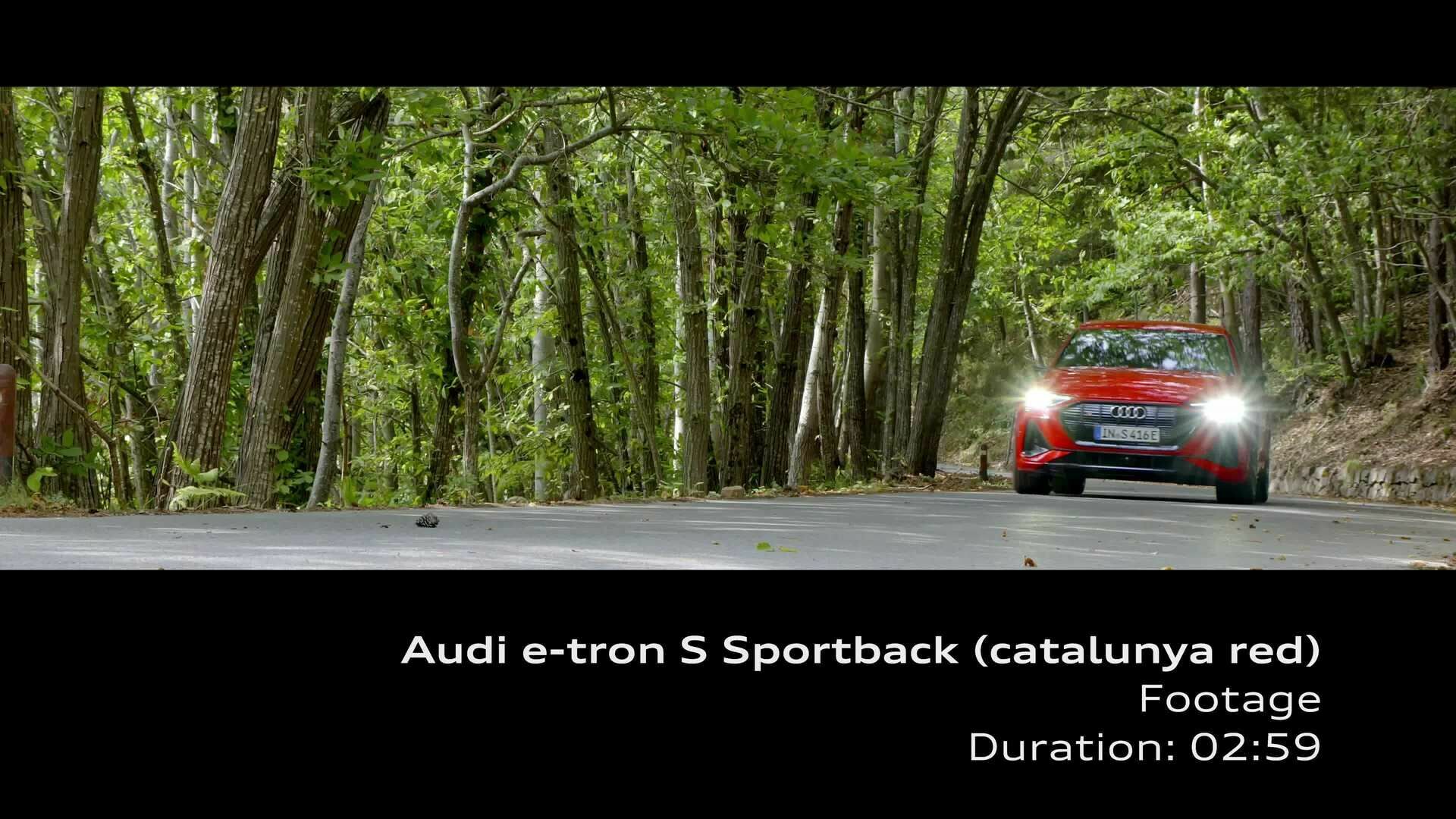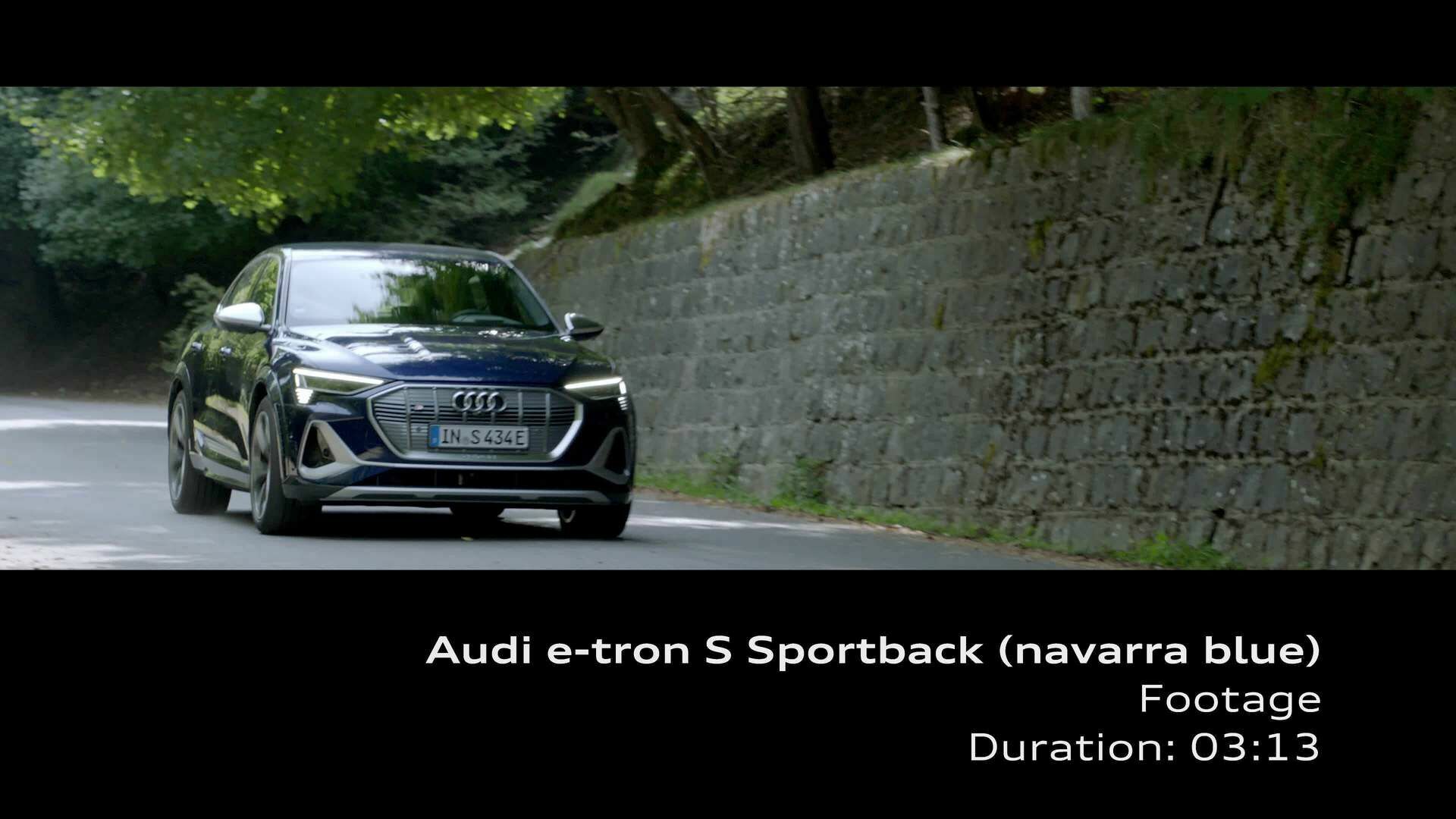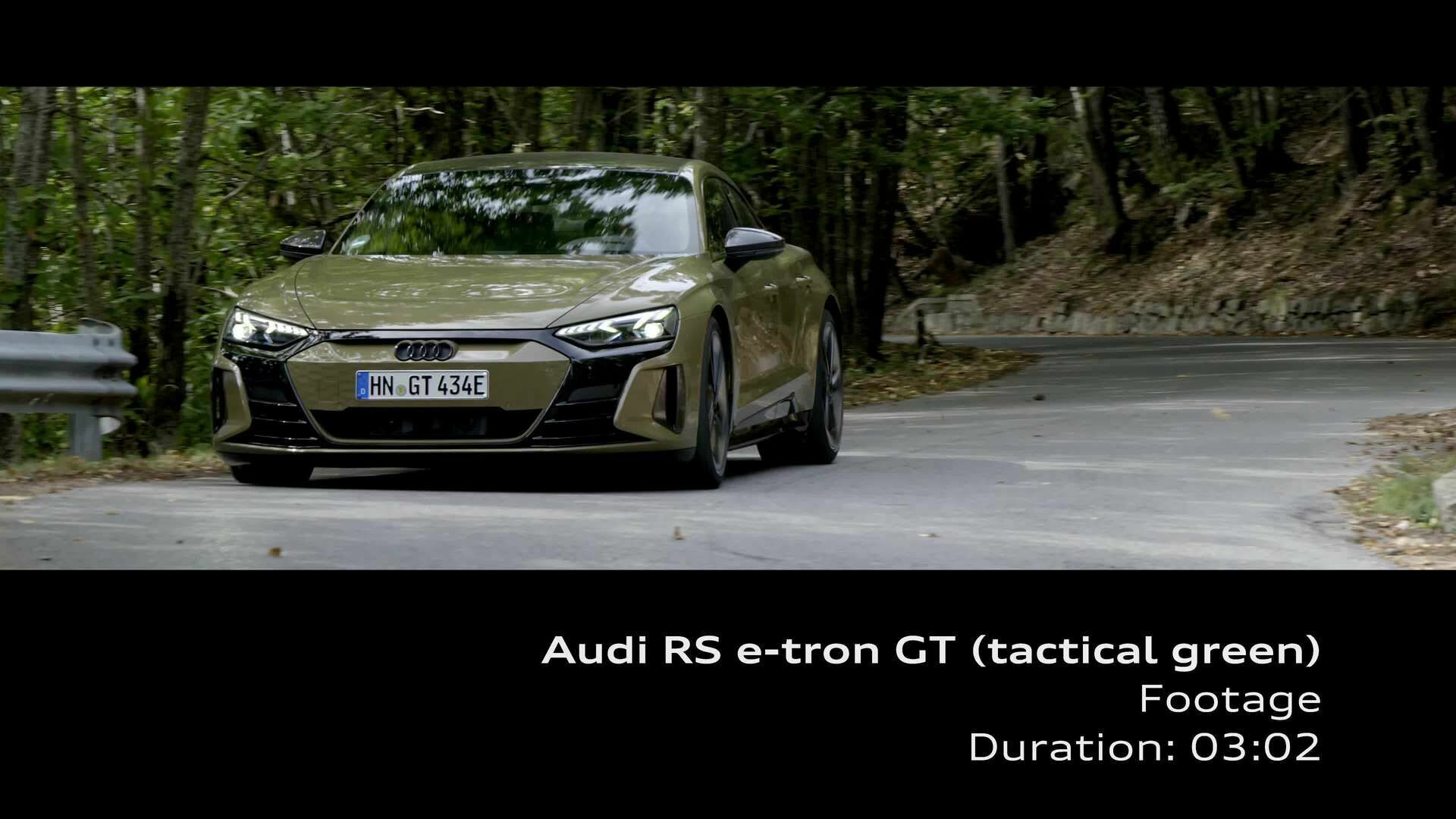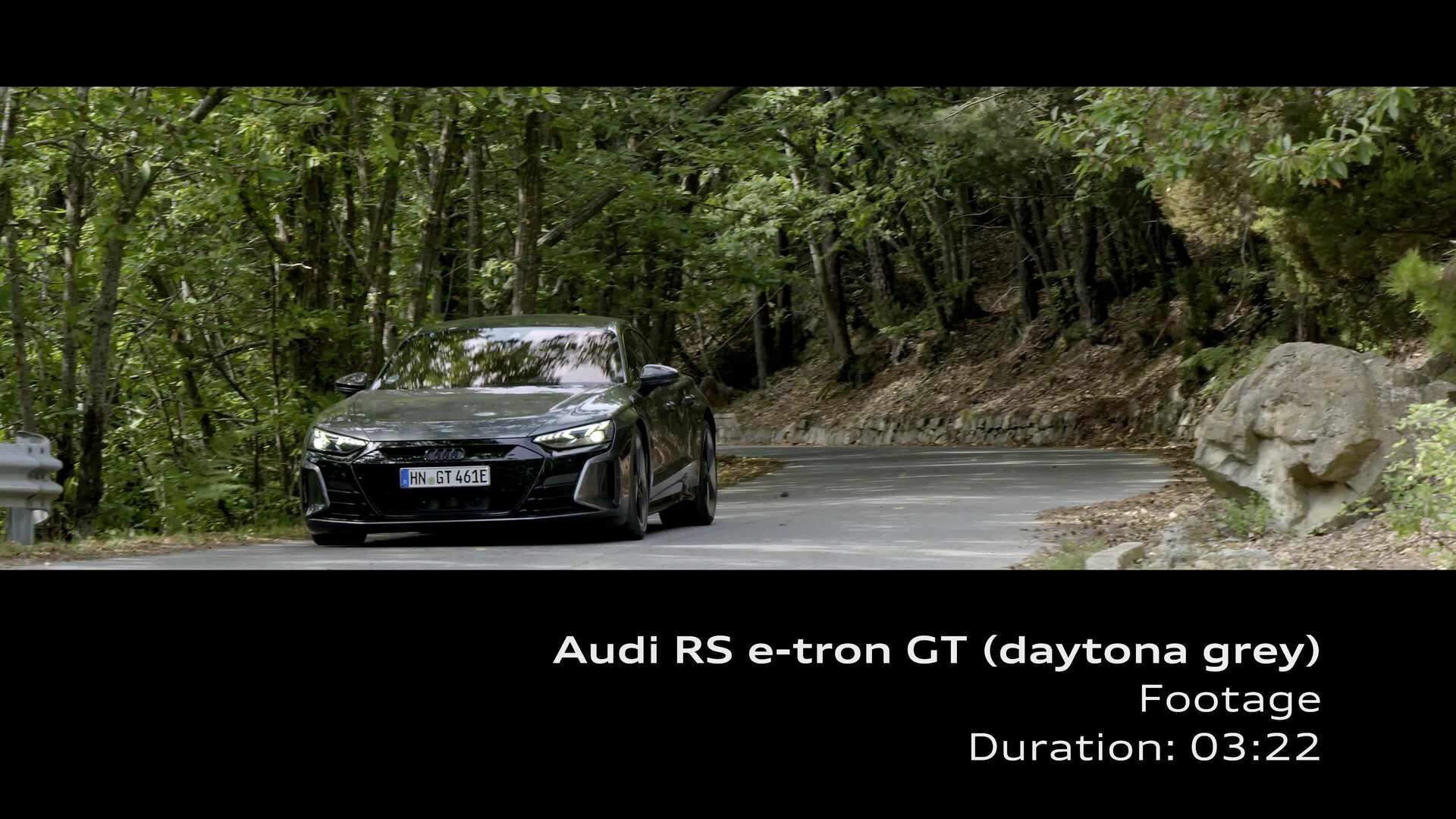The legendary quattro: setting the pace in e-mobility as well
- Latest development: torque splitter and electric torque vectoring
- Track record of success: approx. 11.8 million Audi vehicles with all-wheel drive manufactured since 1980
- Drive system 2.0: electric quattro in the e-tron models

The quattro drive system is synonymous with dynamic handling, driving stability, traction, and safety, as well as technical expertise and top performance – in short, with “Vorsprung durch Technik.” This is why Audi and quattro are mentioned in the same breath. The system that delivers power to all four wheels is a mainstay of the brand – from the original quattro released back in 1980 to the current electric all-wheel-drive system with electric torque vectoring in the premium manufacturer’s e-tron series.
How did the quattro become so legendary?
When the Audi quattro made its debut at the 1980 Geneva Motor Show, it marked the premiere of a transmission that was completely new in the passenger car sector – an all-wheel-drive system that was light, compact, efficient, and exhibited minimal distortion. This made the quattro concept particularly suitable for fast, sporty cars right from the start. And as a result, the laundry list of achievements from more than 40 years of quattro is correspondingly impressive. To date, Audi has manufactured around 11.8 million cars with all-wheel drive. The quattro drive system is an integral part of the brand with the four rings’ DNA and has been enjoying acclaim both in motorsports and among customers since the 1980s. Numerous renowned commercials and campaigns such as the Audi 100 CS quattro climbing a ski jump with professional rally driver Harald Demuth at the wheel have also contributed to its legendary status. With the electric quattro in the e-tron models, Audi is setting the next benchmark in the age of e-mobility.
Where and how is the quattro used today?
With the exception of the A1 series, the quattro is available as a purely mechanical all-wheel-drive system in every model series. The new Audi RS 3 is the first Audi ever to feature the quattro with the RS torque splitter, which distributes drive torque between the rear wheels in a fully variable manner. The e-tron and e-tron Sportback ushered in the era of the electric all-wheel drive in 2018. In the Audi e-tron models, one electric motor powers the front and one the rear axle. The e-tron series’ S models represent a particular technical highlight – this is the first time that three electric motors have been used in a mass-produced model, two of them on the rear axle. In the S models, electric torque vectoring, i.e., targeted torque distribution without a mechanical connection such as a differential between the two rear wheels, gives the quattro drive system even greater agility and traction.
What makes the quattro drive system so unique?
Audi offers a wide variety of automotive concepts across its model range – and as a result, its quattro technology also covers a broad spectrum. Regardless of how the quattro drive system is implemented from a technical standpoint, it is always synonymous with powerful traction, a highly dynamic driving experience, and safety. Common to all quattro versions is the wheel-selective torque control system, which makes the vehicle easier to handle at its dynamic limits by means of light braking interventions. Specifically, it slightly slows down the unloaded wheel on the inside of the curve when the vehicle is cornering dynamically. The difference in propulsive forces ensures that the car turns easily into the curve. These inputs make handling more neutral, faster, and more stable.
What are the differences between the quattro drive systems for longitudinal and transverse engines?
In Audi models with longitudinally mounted front engines, a self-locking center differential forms the linchpin of the permanent quattro drive system. Under normal driving conditions, it distributes 40 percent of the torque to the front axle and 60 percent to the rear axle, i.e., a slight rearward bias for more sporty handling. If necessary, it can transmit up to 70 percent to the front axle or up to 85 percent to the rear axle. The center differential is designed as a purely mechanical, lag-free planetary gear. A ring gear encloses a sun gear, and between the two rotate cylindrical planet gears connected to the rotating housing.
In contrast, in its compact models with transversely mounted engines, Audi uses a quattro drivetrain featuring a hydraulically actuated, electronically controlled multiple disc clutch at its core. To distribute the weight more evenly, it is mounted to the end of the driveshaft in front of the rear axle differential. Its management is configured so dynamically that it can even transmit some of the torque from the front to the rear axle the instant the driver turns the steering wheel.
A multiple disc clutch is also used in the high-performance R8 sports car with its mid-mounted engine, in this case positioned on the front axle. If necessary, it continuously transfers the torque from the rear wheels to the front wheels to achieve the typical Audi quattro drive effect.
Which models is the quattro system with ultra technology designed for?
Optimized for efficiency, the quattro system with ultra technology is designed for those Audi models in which a longitudinally mounted front engine is paired with a manual transmission or the S tronic dual-clutch transmission. In this case, two different clutches are used. When the system shifts into efficient front-wheel drive, the front clutch – a multiple disc clutch – opens at the end of the transmission. At this point, torque is no longer transmitted. The design of the rear dog clutch then ensures that the driveshaft remains truly stationary, thus eliminating the main source of drag losses at the rear of the powertrain. The all-wheel drive’s intelligent control system is always looking ahead with the help of comprehensive sensor technology and by continuously analyzing data on driving dynamics, road conditions, and driving style.
This means that the quattro drive system is always ready when it is needed. During relaxed driving, the quattro system with ultra technology exploits all the advantages of front-wheel drive.
Which type of quattro system is used in sportier models?
Audi offers a sport differential for its particularly powerful models equipped with a tiptronic torque-converter transmission. It further enhances driving dynamics, traction, and stability by ideally distributing torque between the left and right rear wheels in all driving conditions. In addition to the range of a conventional differential, the sport differential features a gear stage on each side and an electrohydraulically actuated multiple disc clutch. When the clutch closes, it continuously forces the higher rotational speed of the gear stage onto the wheel. Being forced to turn faster means that the additional torque required to do so is pulled from the opposite wheel on the inside of the curve via the differential. In this way, more torque can flow specifically to a rear wheel. The sport differential can distribute torque between the left and right wheels in all driving situations, including when the vehicle is coasting. When turning into or accelerating in a curve, torque is primarily directed to the wheel on the outside of the curve – the car is literally pushed into the curve and any hint of understeer is eliminated.
The new Audi RS 3 Sportback and the Audi RS 3 Sedan are the first models to feature quattro permanent all-wheel drive with the RS torque splitter. It also has two electronically controlled multiple disc clutches, each connected to a drive shaft on the rear axle. The system, which is designed for performance, actively distributes drive torque variably between the front axle and the rear axle’s individual wheels.
During dynamic driving, the torque splitter increases torque delivered to the outer rear wheel with the higher wheel load, which significantly reduces the tendency to understeer. In left-hand curves, it transmits torque to the right rear wheel, in right-hand curves to the left rear wheel, and when driving straight ahead to both wheels. This results in optimal stability and maximum agility – especially when cornering at high speeds.
In contrast, how does the electric all-wheel-drive system work?
The electric all-wheel drive – equipped, for example, in the Audi e-tron, Audi e-tron Sportback, Audi RS e-tron GT, and Audi e-tron GT quattro – continuously adjusts the ideal distribution of torque between the two axles in a fully variable manner, and does so within fractions of a second. Similarly, fully variable torque distribution is made possible in the Audi e-tron S by means of a motor on the front axle and two electric motors housed in a single casing on the rear axle. This means that each axle has one or, as in the case of the Audi e-tron S, even two motors, the interaction of which results in the electric quattro. In this way, the electric all-wheel-drive system combines the efficiency of a single-axle drive system with the dynamic handling and traction of an all-wheel-drive system.
If the front and rear axles are no longer physically connected, how is torque distributed?
The connection between the front and rear axles is implemented purely via connected software functions, resulting in tens of thousands of lines of code and countless parameters. The electric quattro distributes torque between the front and rear axles as needed from zero to 100 percent. This is done proactively in slippery conditions or when cornering quickly, before slippage occurs or the car understeers or oversteers. The result is highly precise handling which can be adjusted over a wide range via the chassis control systems – from uncompromisingly stable to sporty. In conjunction with wheel-selective torque control, the electric all-wheel-drive system offers outstanding traction in all weather conditions and on any surface. When the e-tron GT quattro is on the road with “comfort” mode selected in Audi drive select, both electric motors work together in the most energy-saving way possible. When “dynamic” mode is activated, it handles more like a car with rear-wheel drive, while “efficiency” mode clearly prioritizes front-wheel drive for maximum efficiency.
The controlled rear axle differential lock, which is integrated into the control operations of the electronic chassis platform, comes standard in the RS e-tron GT and is optional in the e-tron GT. The multiple disc clutch at its core is fully variable, with a locking range from zero to 100 percent.
The controlled rear axle differential lock increases lateral acceleration through targeted torque distribution, improves traction and stability, and reduces load change reactions. Torque is distributed from the faster turning wheel to the slower turning wheel on the outside of the curve. In addition, selectively slowing down the wheel on the inside of the curve via wheel-selective torque control allows additional yaw torque to be generated at the rear axle.
What role does electric torque vectoring play?
The two all-electric SUVs – the Audi e-tron S and Audi e-tron S Sportback – are each equipped with three electric motors. They can be used to demonstrate both the properties of a sport differential in terms of agility and the advantages of a controlled transverse lock in terms of traction. Each of the two rear-mounted electric motors acts directly on a rear wheel via its gearbox; as with the axles, there is no mechanical connection between the two electric motors. Electric torque vectoring – the shifting of torque between the rear wheels – takes place in milliseconds, and it can apply extremely high levels of torque for increased lateral dynamics. When the car quickly enters a curve, the electric motor allocates a higher level of torque to the outside rear wheel while simultaneously reducing the amount of torque applied to the inside rear wheel. The difference can be as much as 220 Nm; at the wheels this equates to approximately 2,100 Nm due to the gear ratio.
What is the advantage of using individual electric motors?
Only about 30 milliseconds elapse between the time the system detects the driving situation and adjusts the amount of torque applied by the electric motors. In the electric all-wheel-drive system, instead of actuating a mechanical clutch, electricity is distributed.
This happens at lightning speed, four times faster than in systems with conventional torque vectoring via mechanical connections. Every five milliseconds, the software calculates a new value. For this purpose, more power is applied to the outer wheel depending on the driving situation, for example in the case of different friction coefficients or dynamic cornering.
The yaw torque that is generated not only supports the self-steering behavior, but also requires a smaller steering angle to maintain the cornering radius. You essentially steer the vehicle using the accelerator. The result is more agile handling and self-steering behavior and thus a higher cornering speed. If traction is needed, the difference in torque can be even greater – if a rear wheel is on a slippery surface such as a patch of ice, for example, when accelerating it only receives the amount of torque it is capable of applying to the ground, depending on the coefficient of friction. The amount of torque applied to the wheel with the low coefficient of friction is not limited by the electronic differential lock, as is the case with a mechanical system. The advantage is that torque flows almost entirely to the high-traction wheel and is not lost via the brake engaging.
Which systems and control units are involved in electric torque vectoring?
The control units are closely interconnected – in this case, the functions of the electronic stabilization control, the actuator control unit, the electronic chassis platform, and the power electronics all interact with each other.
How do these systems work in tandem?
The mastermind in this network is the electronic chassis platform with its integrated longitudinal and lateral torque distribution – it plays a key role in the management (i.e., the control and adjustment) of the all-wheel drive and torque vectoring. Sensor signals keep it permanently informed of the car’s driving status. Based on this data and the driver’s wishes, it calculates the ideal longitudinal and transverse torque distribution. In the Audi e-tron S, for example, its tasks include electric torque vectoring on the rear axle as well as wheel-selective torque control on the front axle – at the dynamic limit, the unloaded inside front wheel is slowed down slightly by the wheel brake. This small intervention – that the driver doesn’t even notice – prevents slippage and makes handling even safer.
When do the e-tron and e-tron S models activate their electric all-wheel drive?
The electric all-wheel drive is active when grip on low-friction roads decreases, during particularly dynamic driving, when the driver needs a high level of drive power, or when maximum recuperation is required – in other words, when recovering energy during braking and coasting. If the driver decelerates the car to a value of 0.3 g, the electric motors act as generators, using the kinetic energy of the car and converting it into electrical energy, which is stored in the battery. This applies to more than 90 percent of all braking situations during day-to-day driving. Only when the pedal pressure increases does the system seamlessly engage the hydraulic wheel brakes. When braking from 100 km/h, for example, the Audi e-tron S can recover kinetic energy with up to 270 kW of power. If full power is required during acceleration, the e-tron S models can deliver a total of 370 kW of boost power and 973 Nm of torque.
How can drivers influence the characteristics of the electric quattro?
Drivers can adapt the quattro to their wishes using two control systems – the standard Audi drive select dynamic handling system and the electronic stabilization control (ESC) system. Using drive select, drivers can adjust the car’s performance and handling characteristics via different profiles, ranging from exceptionally comfortable to extremely efficient to decidedly sporty – depending on the road conditions and their personal preferences. These modes affect the steering assistance and drive characteristics, among other parameters. Similarly, there are several different ESC programs available. When driving off-road, it optimizes stability, traction, and braking, among other parameters, and activates the standard-equipped hill descent assist system.


